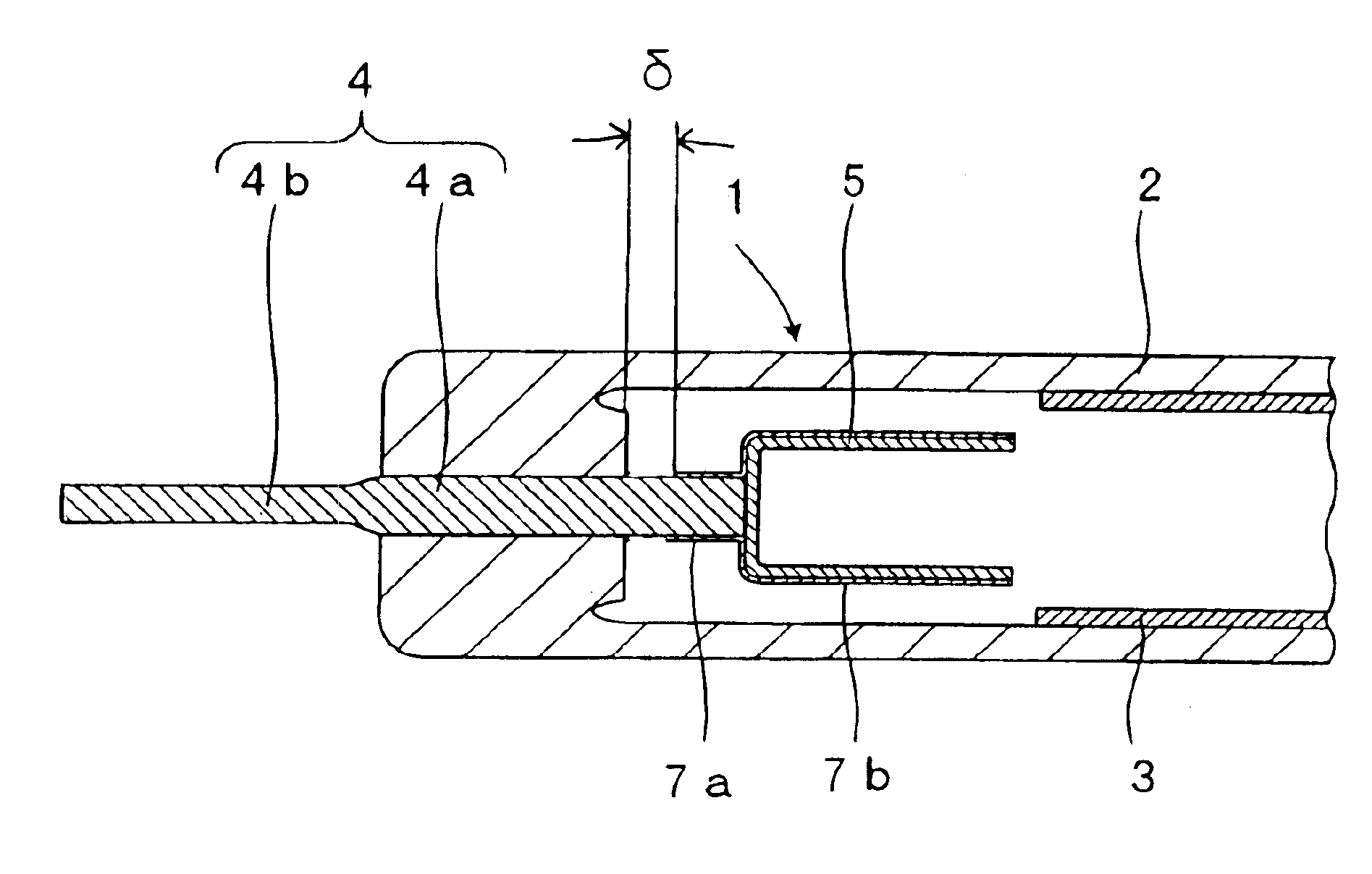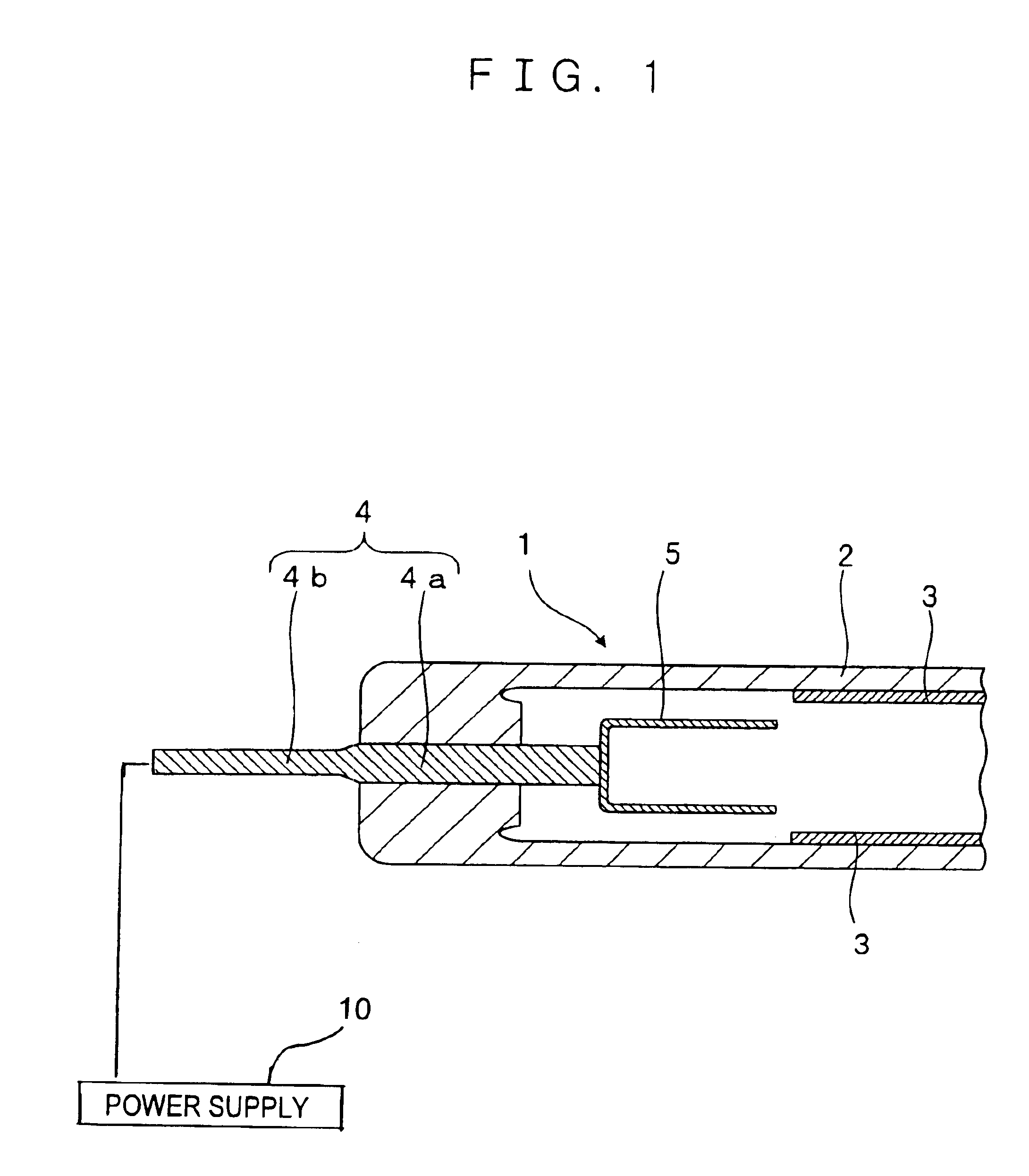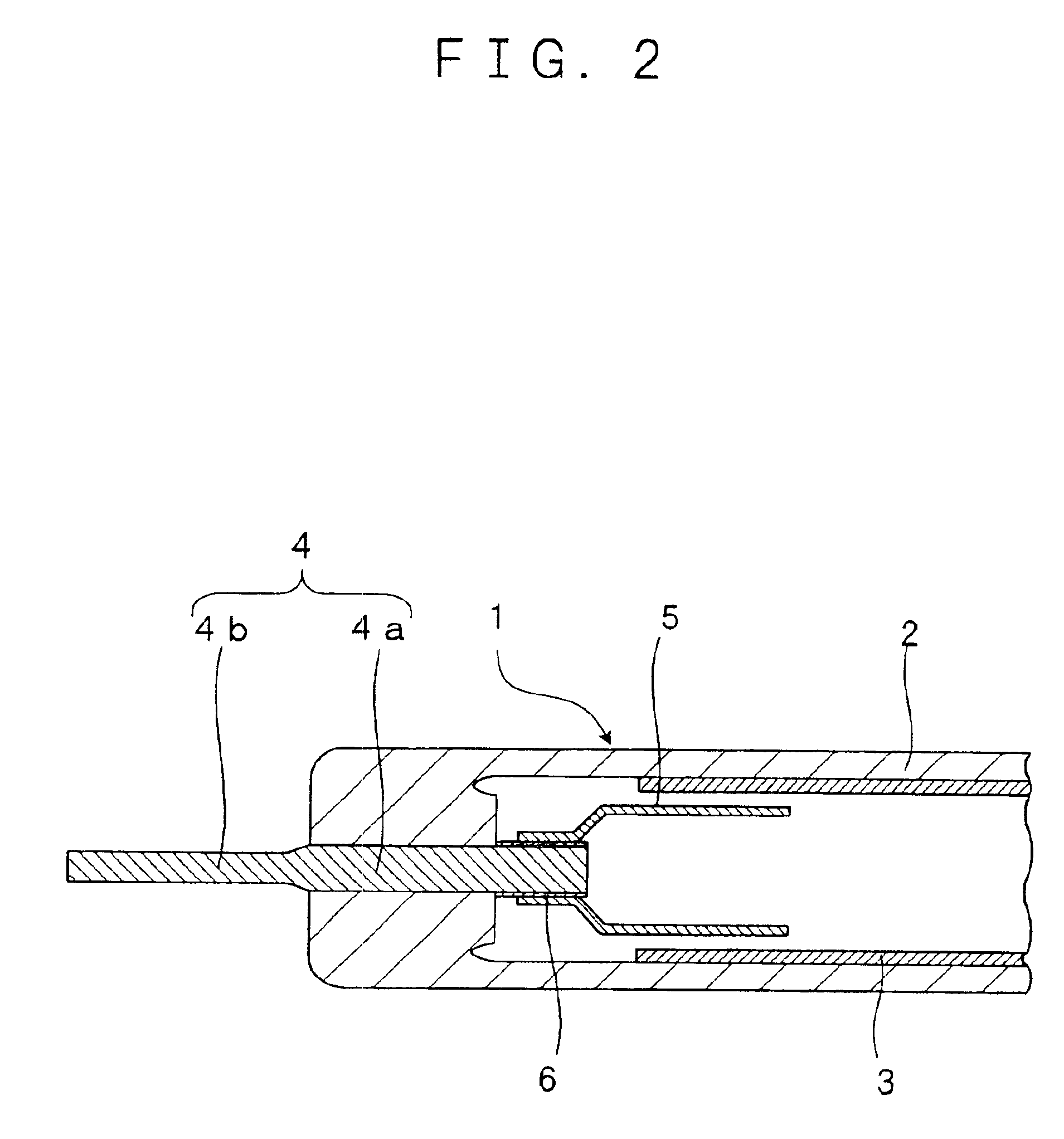Cold-cathode discharge lamp and lamp device having reduced sputtering on internal lead-in wire
a technology lamp device, which is applied in the direction of low-pressure discharge lamps, gas-filled discharge tubes, discharge tubes luminescnet screens, etc., can solve the problems of interfering with the longer and achieve the effect of reducing sputtering and prolonging the life of cold cathode discharge lamps
- Summary
- Abstract
- Description
- Claims
- Application Information
AI Technical Summary
Benefits of technology
Problems solved by technology
Method used
Image
Examples
embodiment 1
FIGS. 1 and 2 show (Embodiment 1) of the present invention.
As shown in FIG. 1, a lead-in wire 4 is provided at an end of a lighting tube 1 having a phosphor 3 applied onto the inner surface of a glass tube 2. The lead-in wire 4 has one end connected to an external power supply 10 and the other end connected to a conductive cylindrical electrode 5. A suitable amount of mercury and rare gas is contained into the lighting tube 1, and sealing is performed on the lighting tube 1.
The lead-in wire 4 is constituted by an internal lead-in wire 4a, which is connected in the lighting tube 1 to the non-discharge end of the cylindrical electrode 5 and hermetically seals the lighting tube 1, and an outer lead-in wire 4b connected to the external power supply via the internal lead-in wire 4a outside the lighting tube 1.
When current is supplied to the cylindrical electrode 5 from the external power supply via the lead-in wire 4, discharge occurs in the lighting tube 1, and ultraviolet radiation gen...
embodiment 2
FIG. 3 shows (Embodiment 2) of the present invention.
(Embodiment 2) is different from (Embodiment 1) in that at least a part of the surface of an internal lead-in wire 4a is made of a material having a larger work function value than that of a material that forms the inner surface of a cylindrical electrode 5.
Hereinafter, explanation will be made according to specific examples.
As shown in FIG. 3, in a cold-cathode discharge lamp configured as FIG. 1, a glass tube 2 is made of a hard glass material such as borosilicate glass, and the internal lead-in wire 4a is made of a material such as tungsten, which is approximate in expansion coefficient to the hard glass material that forms the glass tube 2.
A material of the cylindrical electrode 5 is not particularly limited. For example, the cylindrical electrode 5 is made of tungsten, which is the same material as the internal lead-wire 4a, nickel having a larger work function value than that of the material that forms the internal lead-in w...
embodiment 3
FIG. 4 shows (Embodiment 3) of the present invention.
As to a cold-cathode discharge lamp configured as FIG. 3, (Embodiment 3) is different from (Embodiment 2) in that at least a part of the surface of an internal lead-in wire 4a is covered with insulating coatings 8a and 8b, instead of covering the outer surface of the internal lead-in wire 4a and the outer surface of the cylindrical electrode 5 with a material having a large work function value. Reference character “δ” identifies a portion of such example arrangement internal wire 4a not covered by film 8a,8b in FIG. 4.
To be specific, an oxide film 9 is formed on a part of the internal lead-in wire 4a that abuts a glass tube 2 on the internal lead-in wire 4a. The internal lead-in wire 4a is made of stainless (e.g., stainless containing 6% of chromium referred to as a 426 alloy, 42 to 47% of nickel, and iron accounting for the remainder). On the outer circumferential surface of the internal lead-in wire 4a in the lighting tube 1, an...
PUM
 Login to View More
Login to View More Abstract
Description
Claims
Application Information
 Login to View More
Login to View More - R&D
- Intellectual Property
- Life Sciences
- Materials
- Tech Scout
- Unparalleled Data Quality
- Higher Quality Content
- 60% Fewer Hallucinations
Browse by: Latest US Patents, China's latest patents, Technical Efficacy Thesaurus, Application Domain, Technology Topic, Popular Technical Reports.
© 2025 PatSnap. All rights reserved.Legal|Privacy policy|Modern Slavery Act Transparency Statement|Sitemap|About US| Contact US: help@patsnap.com



